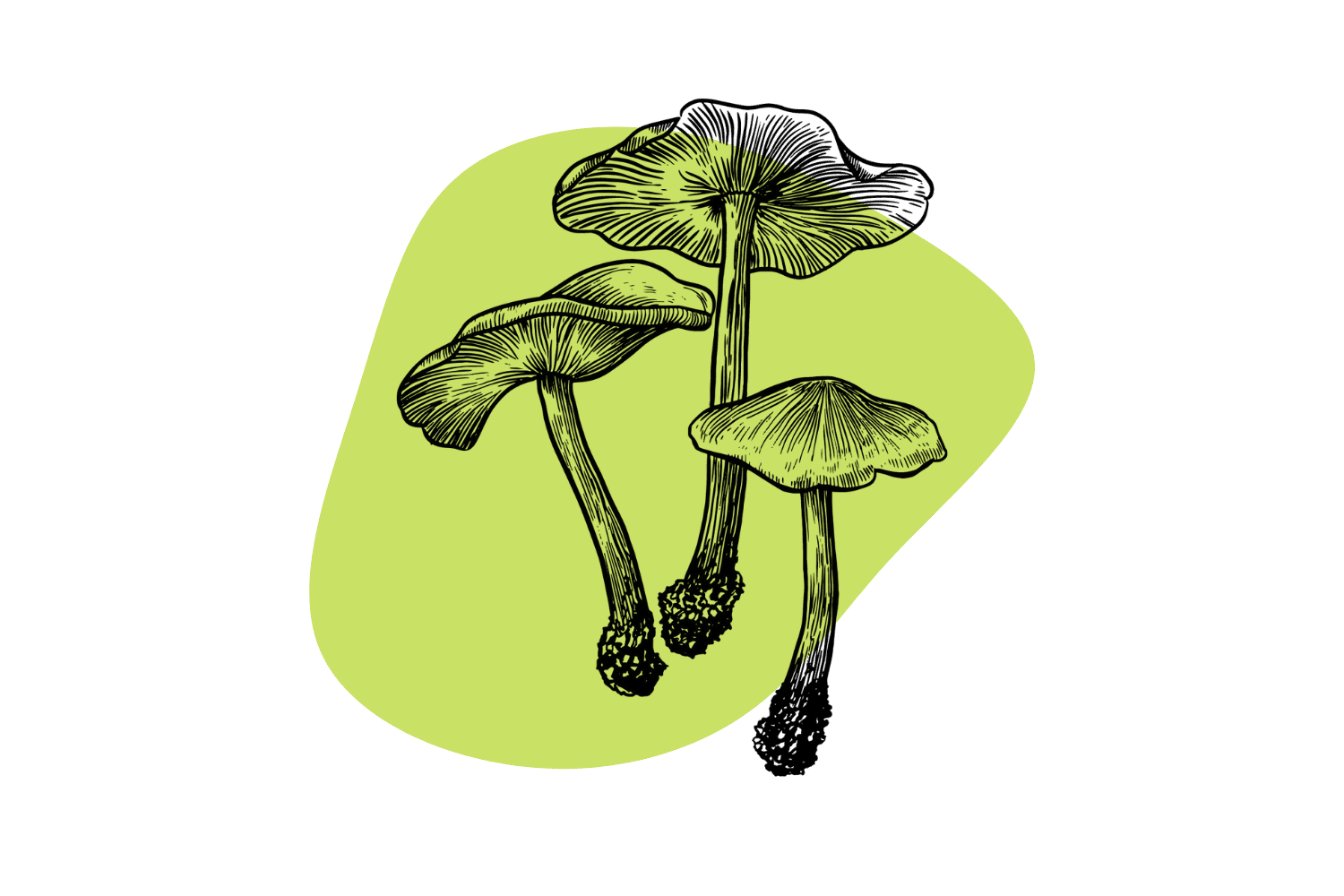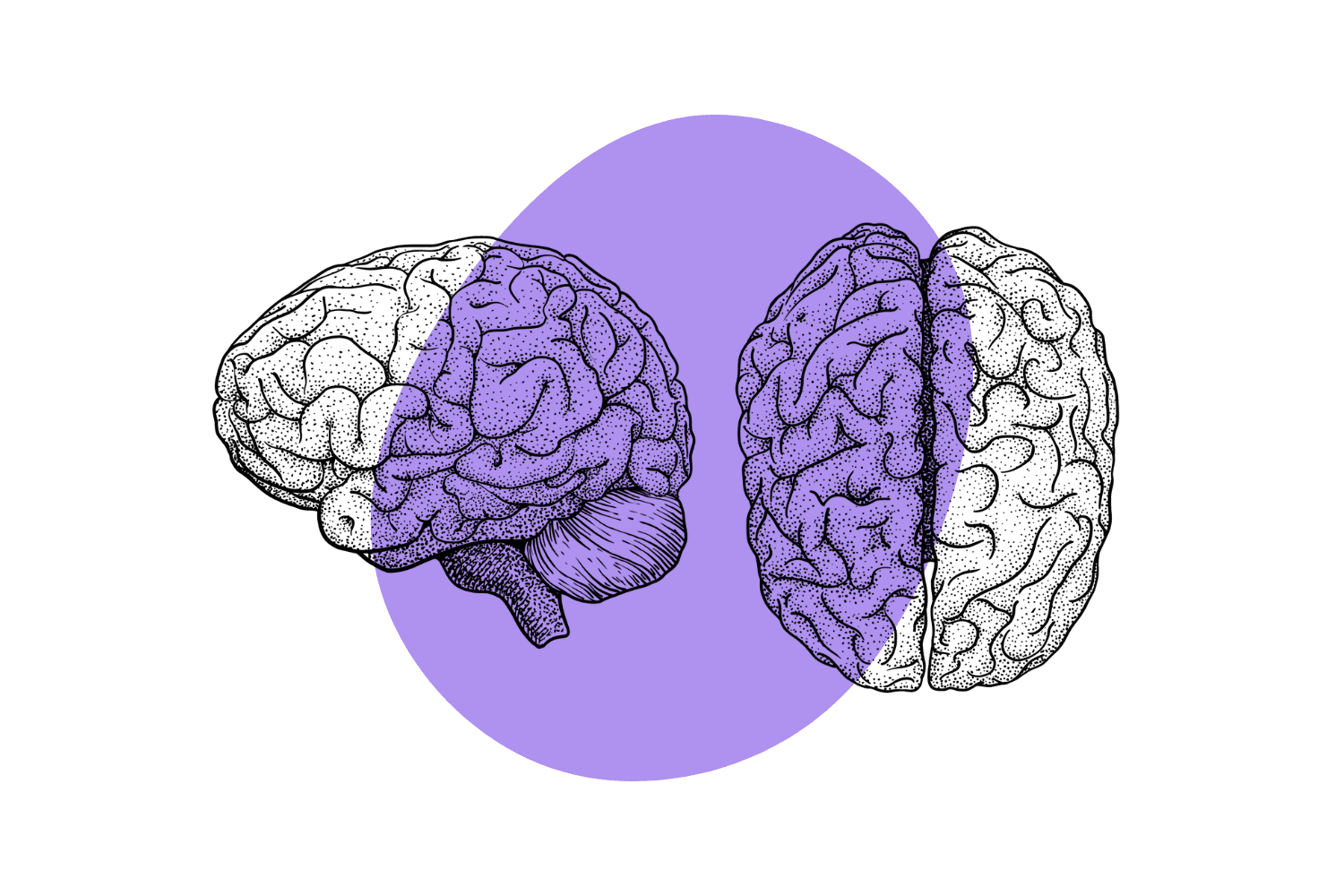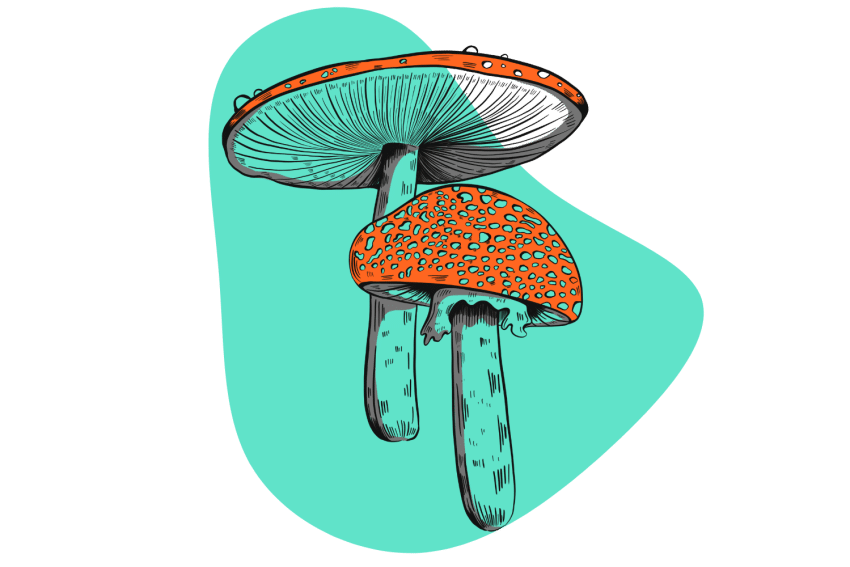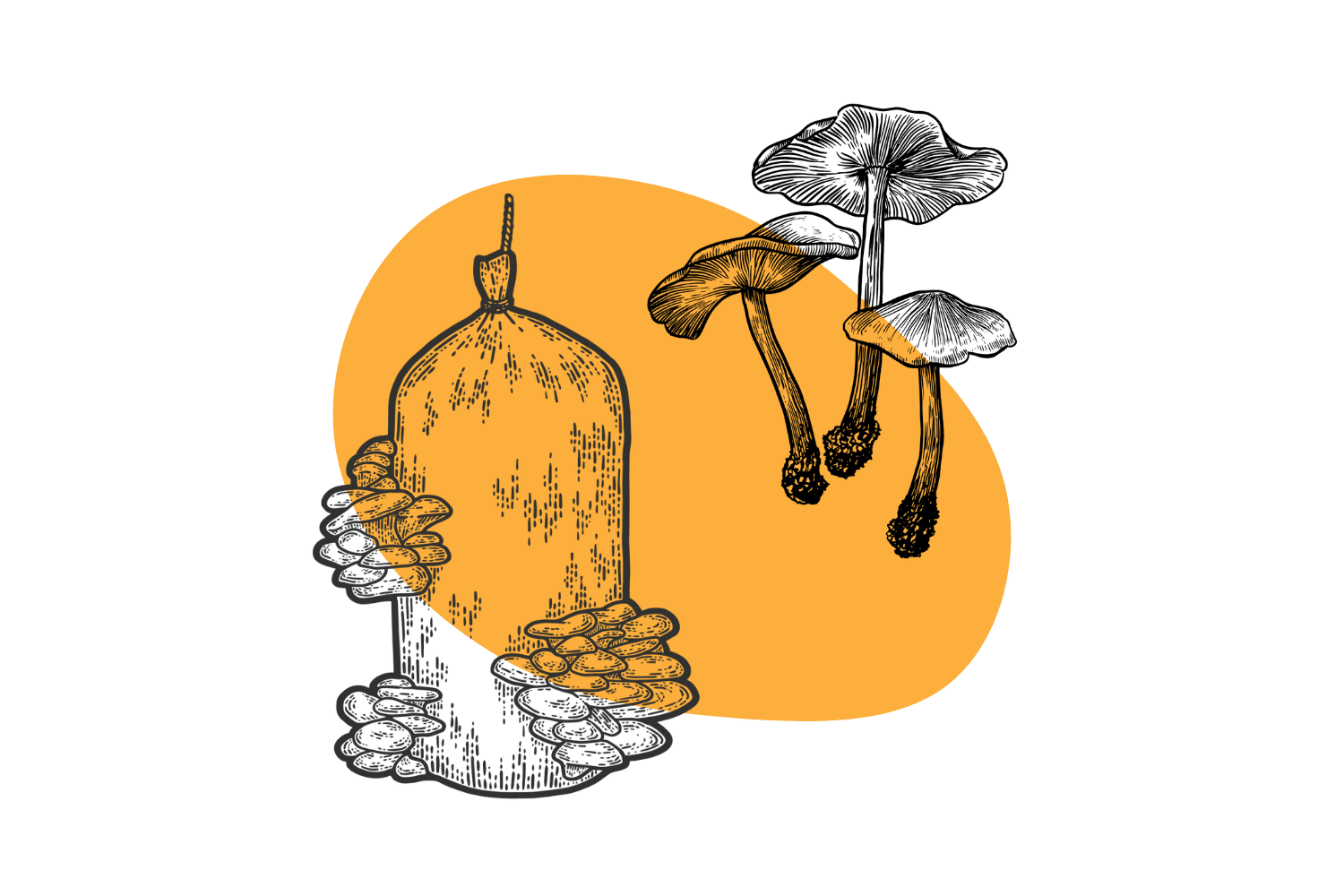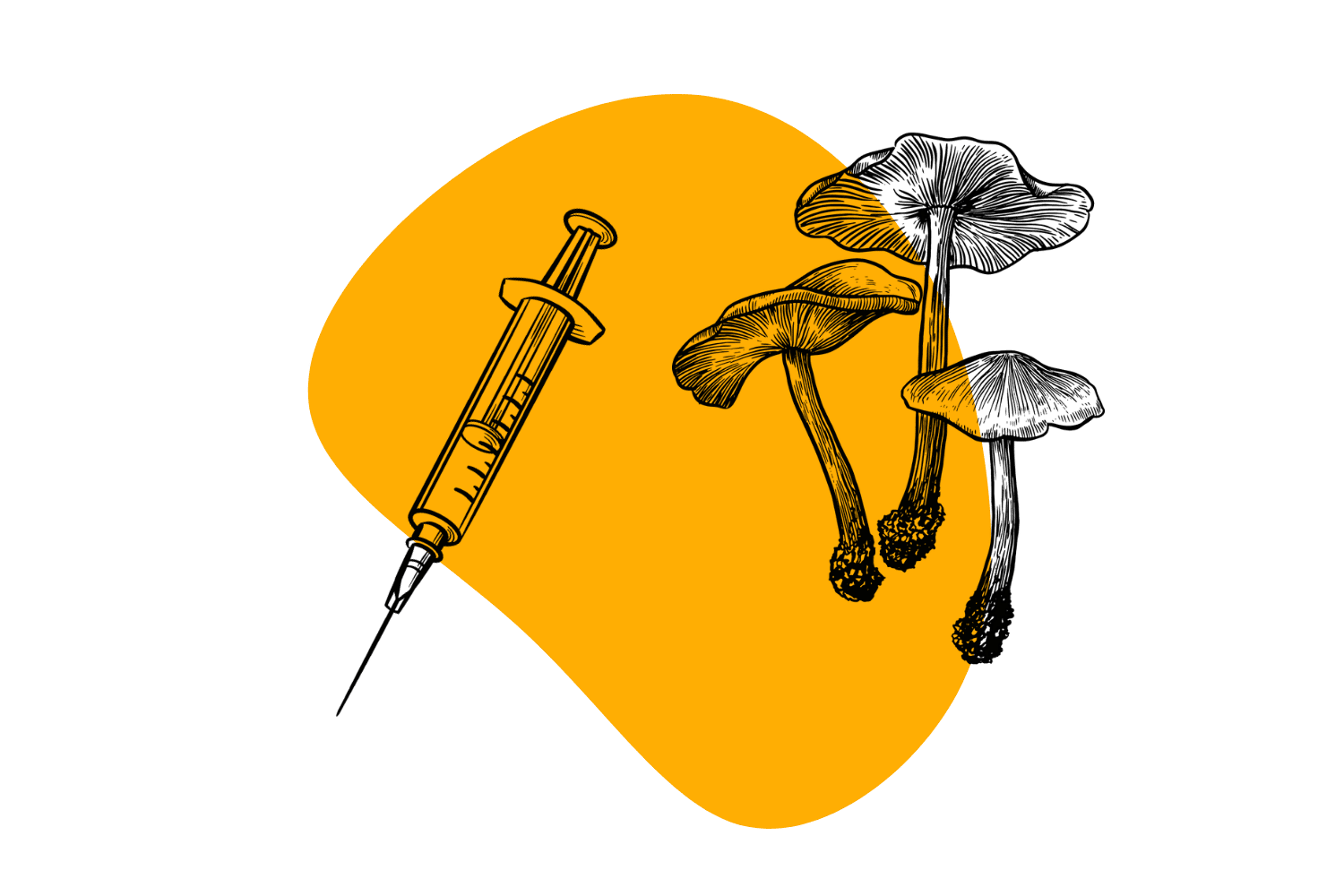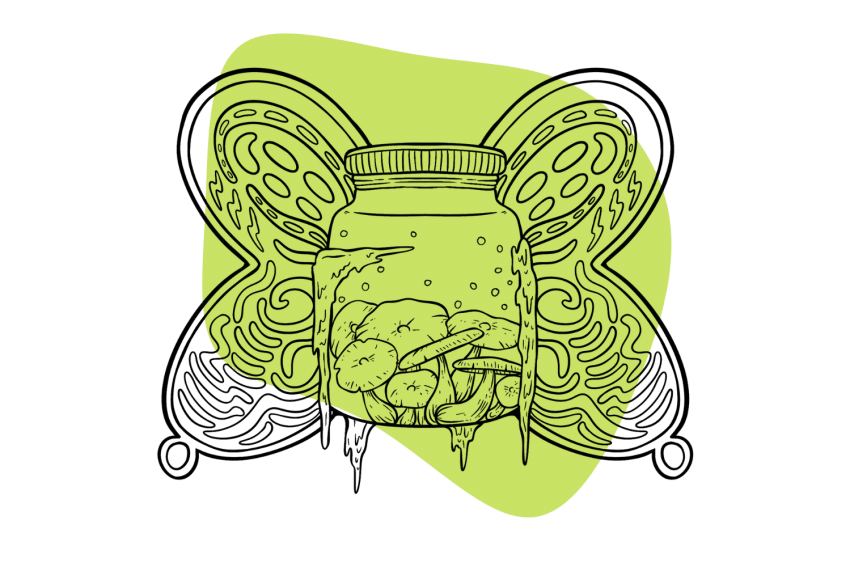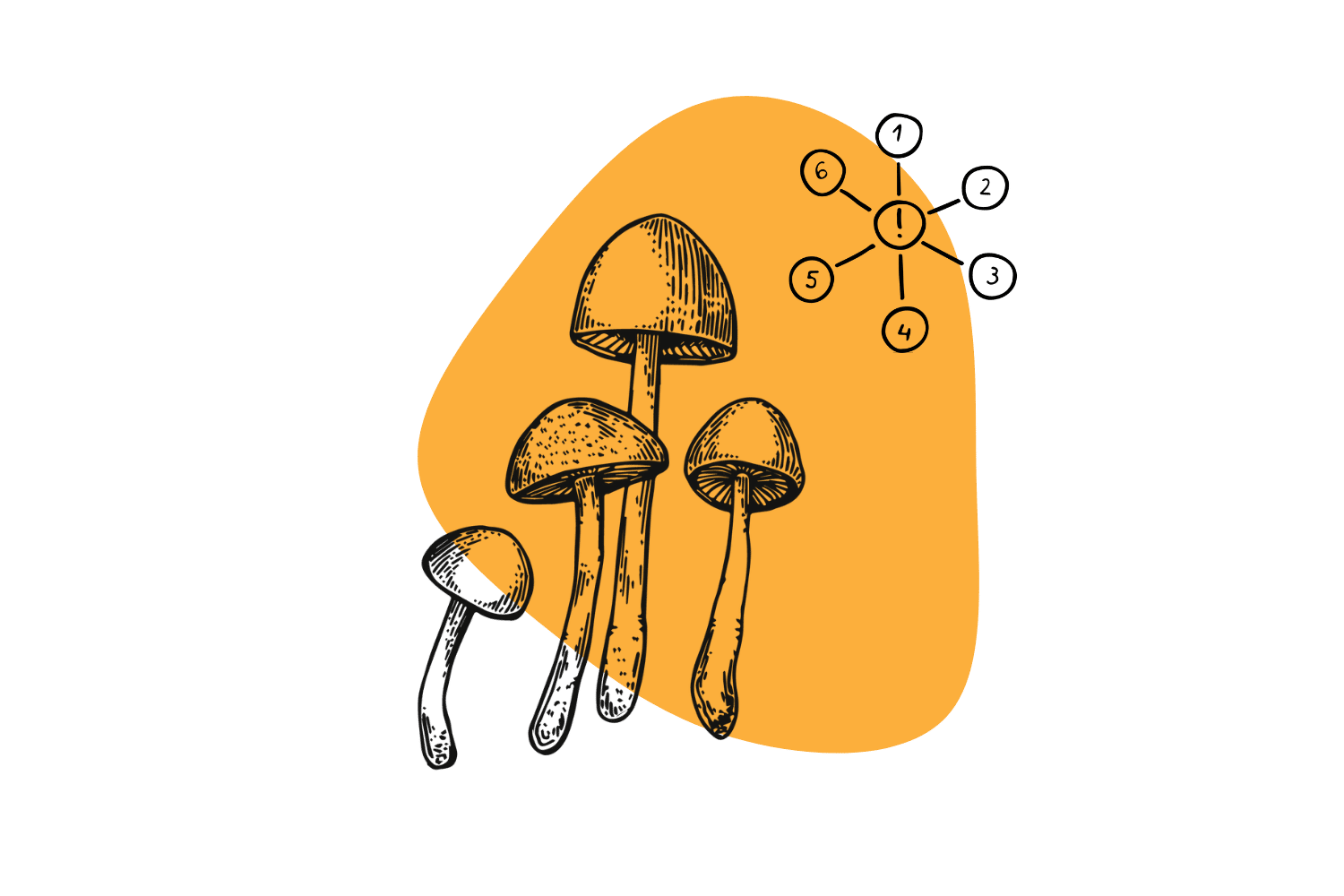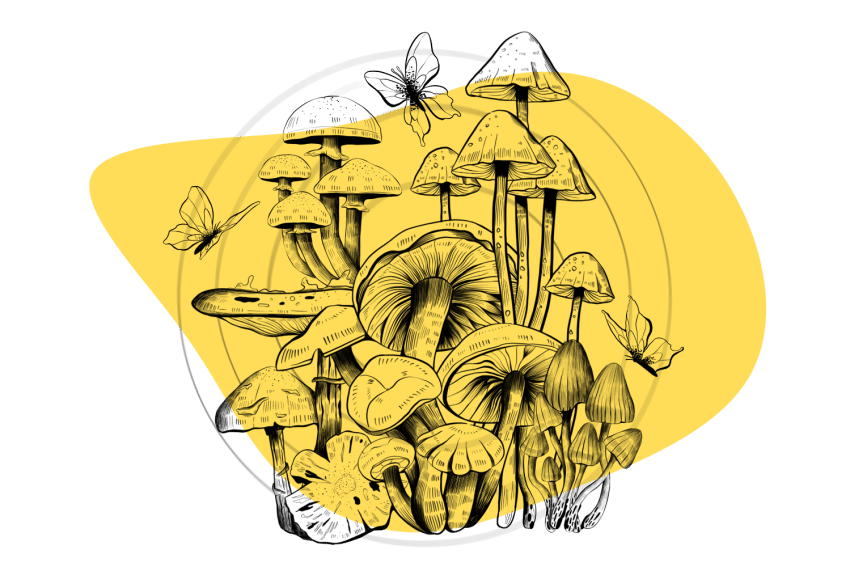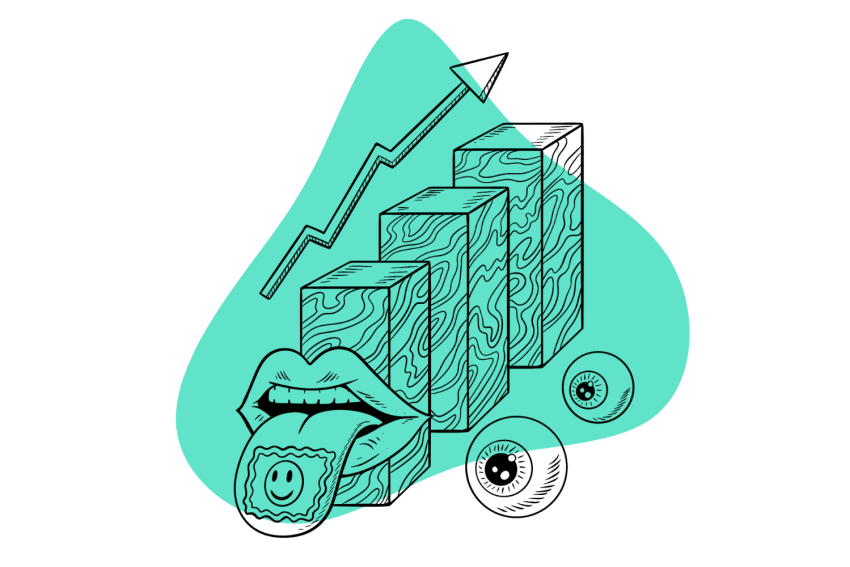Let’s Clear Up Some Confusion: The Blue Meanies Mushroom Strain
These magic mushrooms are so chock-full of psilocybin they turn blue just by touching them.
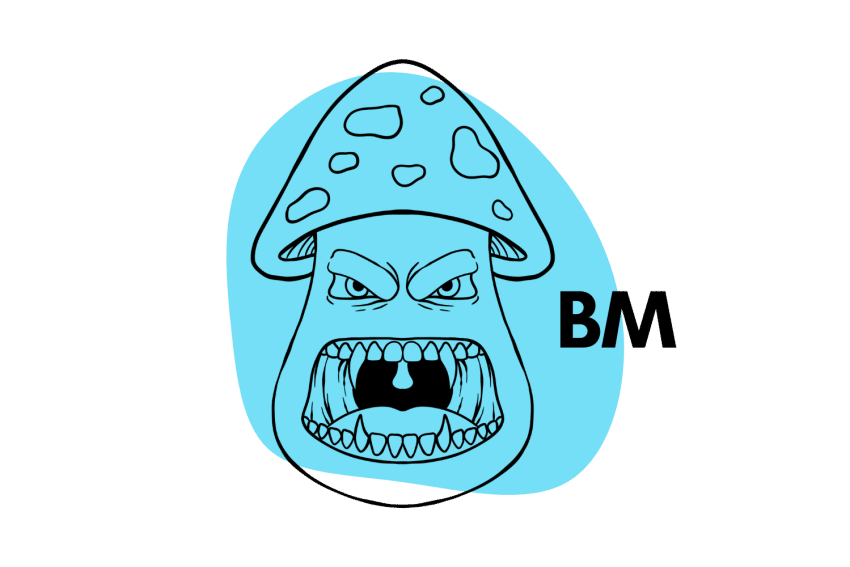
If you search for information on Blue Meanies, you’re going to find one of two results — it can refer both to a strain of Psilocybe cubensis (which is what we’re going to cover today) as well as an entirely separate species called Panaeolus cyanescens.
Blue Meanies (the Psilocybe version) is characterized by a deep blue “stain” that appears just about anywhere you happen to touch them. They bruise super easily, causing the high concentrations of psilocybin inside to oxidize and alter the color of the mushrooms.
This is common among all psilocybin mushroom strains and species, but the coloration is more noticeable on Blue Meanies due to a combination of high psilocybin and lighter pigmentation.
The P. cubensis strain was (allegedly) originally harvested in Australia, after which the spores were isolated to create the standalone strain we know today. This strain is very potent.
Blue Meanies (Psilocybe) Specs
| Potency | Average 🍄 |
| Cultivation | Beginner |
| Species | Psilocybe cubensis |
| Substrate Recommendation | Rye Grain or Brown Rice Flour |
| Cost | $$ |
| Sold By | MYYCO (🇺🇸), Sporeslab (🇨🇦), Spores 101 (🇺🇸/🇨🇦), Miracle Farms (🇺🇸/🇨🇦), The Magic Mushrooms Shop (🇪🇺) |
Clearing Up The Naming Confusion of Blue Meanies Mushrooms
As mentioned, Blue Meanies refers to both a variant of Psilocybe cubensis and is also the common name for the entire Panaeolus cyanescens species.
The reason for this confusion is thought to have come from some confusion among a spore vendor that mistakenly sold Psilocybe cubensis spores as “Blue Meanines” instead of the intended Panaeolus cyanescens sample.
Another theory for the strain’s name is that they were named after the main antagonists in the Beatles movie, “Yellow Submarine.” This animated movie came out in 1968, and with the Beatles’ ties to psychedelic drugs, spirituality, and deep introspection, it only makes sense that the name would be adapted from a movie about the band.
Regardless of the cause, this overlapping of names has generated a ton of confusion around this mushroom, its effects, and how best to go about using or growing it.
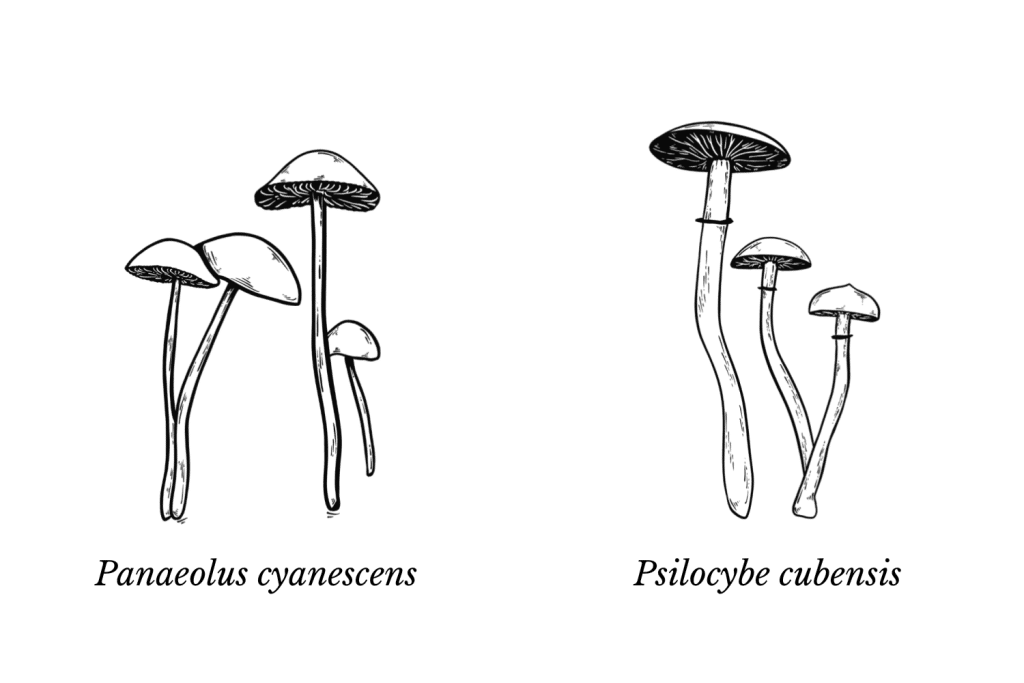
If given a handful of Blue Meanies mushrooms, it’s important to know exactly what species you’re looking at. Psilocybe cubensis are much larger and denser (and nearly twice as strong) as the other version, Panaeolus cyanescens, which sports a tall, thin stem and smaller caps.
Blue Meanies Potency & Psilocybin Content
Some sources maintain that Blue Meanies have an average psilocybin content of between 0.75% to 1% by weight, which is considered roughly average compared to other Psilocybe cubensis strains.
Most trip reports from users also maintain that the potency is the same or slightly above average, which supports these claims.
For a quantitative analysis of psilocybin mushroom potency, we often turn to the Psilocybin Cup hosted by Oakland Hyphae. So far, 4 samples of Blue Meanie mushrooms have been submitted to the competition for testing.
Based on these results, the average psilocybin and psilocin levels (percent of the dried weight) for the Blue Meanie strain are 0.67% and 0.05%, respectively. The total tryptamine average is around 0.75%, and the strongest sample submitted so far registered at 0.87%.
Keep in mind that the potency can vary significantly depending on the growing and storage conditions. The results mentioned above were from samples grown by expert cultivators.
Blue Meanies Genetic Relatives
The direct lineage of Blue Meanies is unclear, but it’s believed to be a close relative to the Australian strain and Tasmanian strain — all of which come from around the same region and display similar growth characteristics.
The Australia strain sometimes referred to as “Aussies” or “gold tops,” is differentiated by their darker, more golden-yellow color compared to the Blue Meanies strain.
The Tasmanian strain, conversely, generally produces larger fruits than the Blue Meanies strain but has comparable potency.
Where to Buy Blue Meanies Shroom Spores
Individuals interested in purchasing Blue Meanies shroom spores for collecting or cultivating should have no issue finding vendors who carry them. This is one of the most popular and sought-after strains of magic mushrooms, so most major retailers keep them in stock.
Here are some of our favorite vendors that carry the Blue Meanies mushroom strain:
- If you live in the US — MYYCO or Spores 101 are probably your best bet. You can also check out High Desert Spores (often, but not always in stock).
- If you live in Canada — Sporeslab will be one of the best resources for buying Blue Meanies spores, but you can also check out Spores 101 or Mushroom Prints
- If you live in Europe — The Magic Mushrooms Shop (🇪🇺), Shiny Spores (🇬🇧)
→ View all spore vendors & grow kit suppliers
How to Grow Blue Meanies Shrooms
Growing Blue Meanies is a relatively straightforward process. The strain is relatively resistant to disease and mold (because of its fast colonization rate).
It tends to produce several large specimens, followed by clusters of small to medium-sized mushrooms. All mushrooms from this strain are very potent; even samples growing in underoptimized conditions tend to be quite strong.
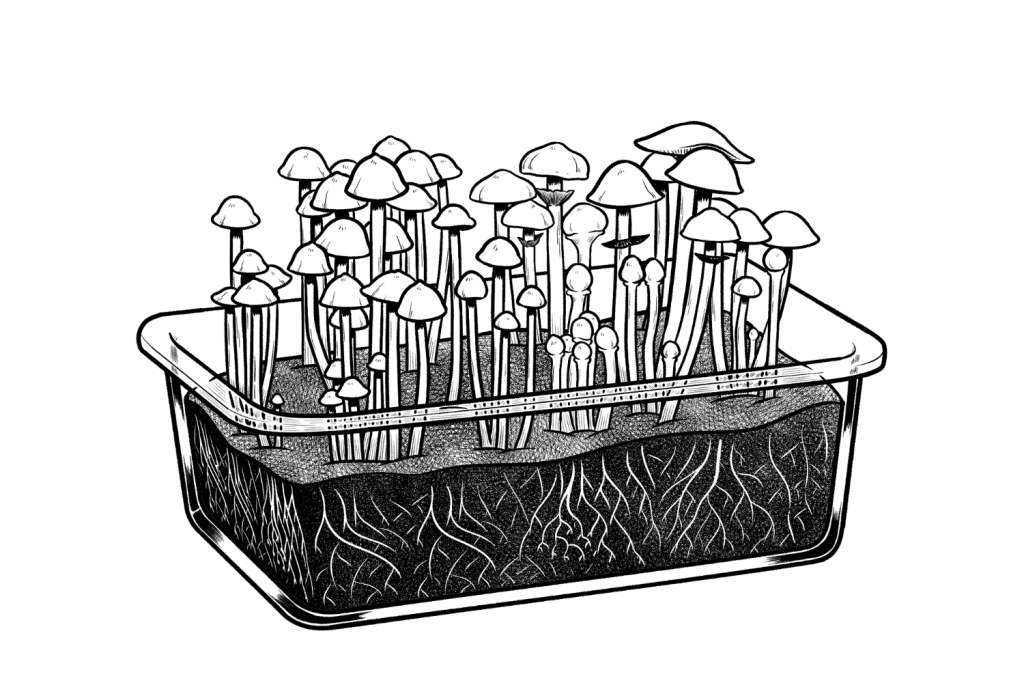
Blue Meanies deal well with ice baths, so you can resort to that if you find your mycelium is getting stuck after just one or two flushes.
Check out our in-depth shroom growing guide for more information and guidance.
Similar Strains
Whether you’re looking for other magic mushroom strains that are suitable for beginners to grow, or you love the high potency and intense trip experience Blue Meanies provide, knowing similar strains can help you find other varieties that you enjoy growing or consuming.
Below, we’ll provide a brief description of some other magic mushroom strains that resemble Blue Meanies.
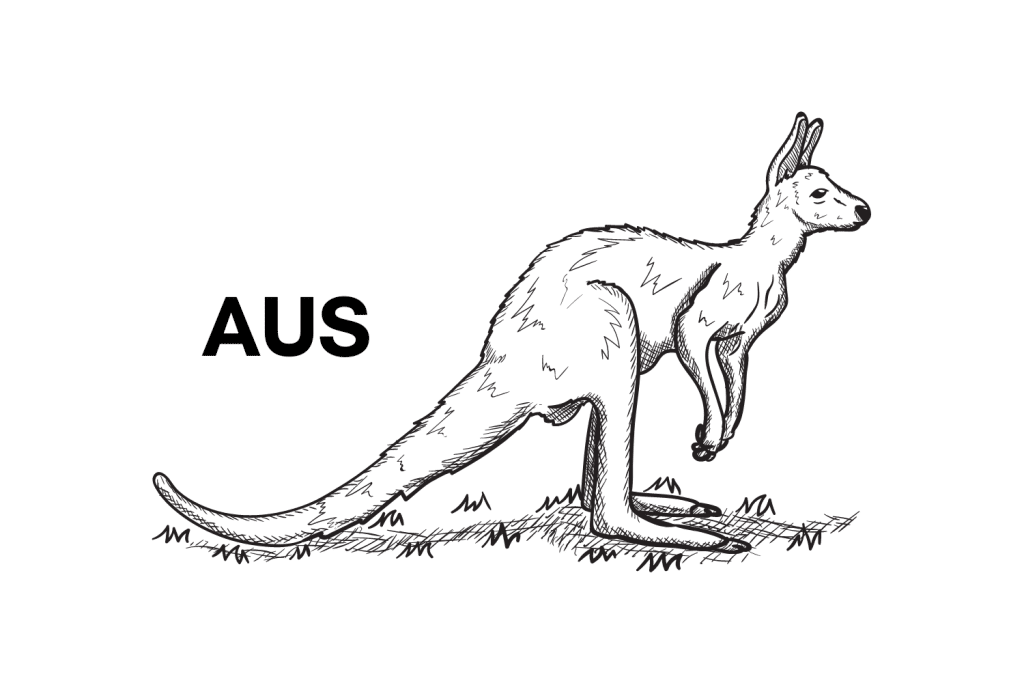
Australian strain
Sometimes called “gold tops” or “aussies,” Australian shrooms hail from Australia, just like Blue Meanies. Not only does this strain share an origin with Blue Meanies, but it’s also highly resistant to disease and mold, making it another great option for beginner cultivators. The potency is also quite high and will bruise blue if you handle them too much.
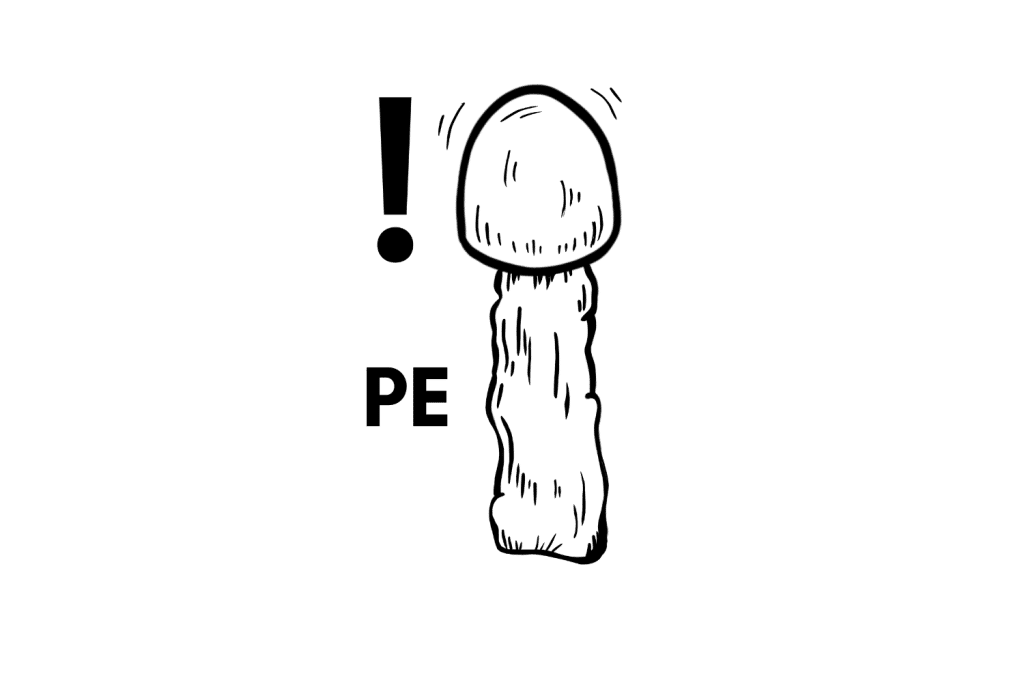
Penis Envy
The Penis Envy strain is one of the most well-known magic mushroom strains available. It was likely collected by Terrence McKenna, an outspoken psychedelic advocate, and user. This strain’s high potency makes it a decent alternative to Blue Meanies for users looking for an intense experience.
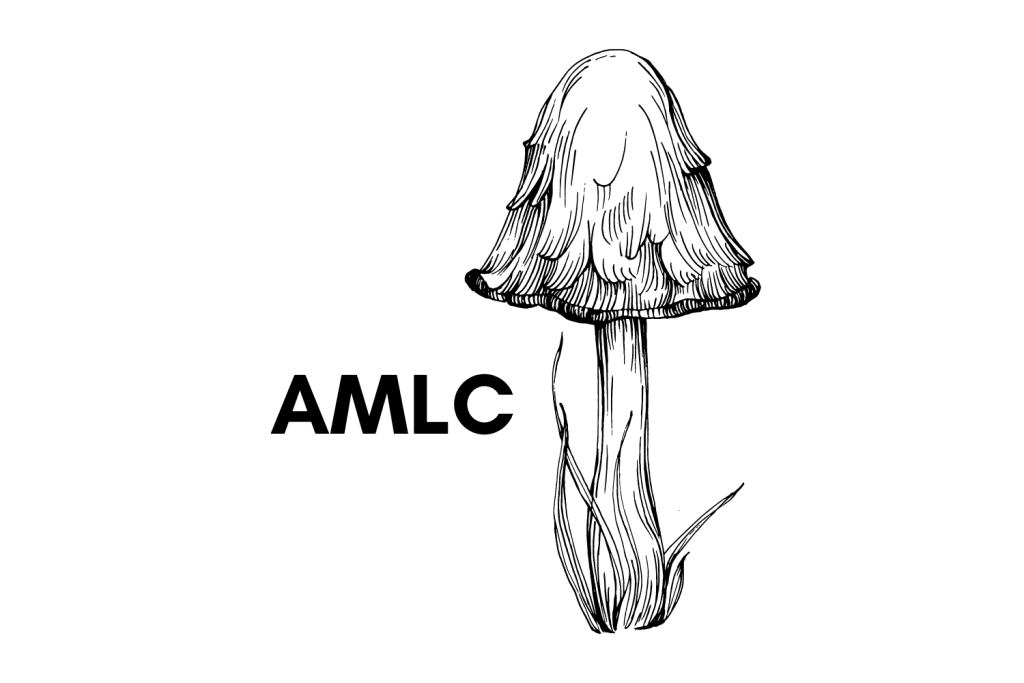
Melmac
The Melmac strain’s origins are often debated, but the general consensus is that Terrence McKenna and his brother, Dennis McKenna, discovered this strain during an excursion in the Amazon. This strain resembles Blue Meanies solely in its high potency and ability to produce intense psychedelic experiences.
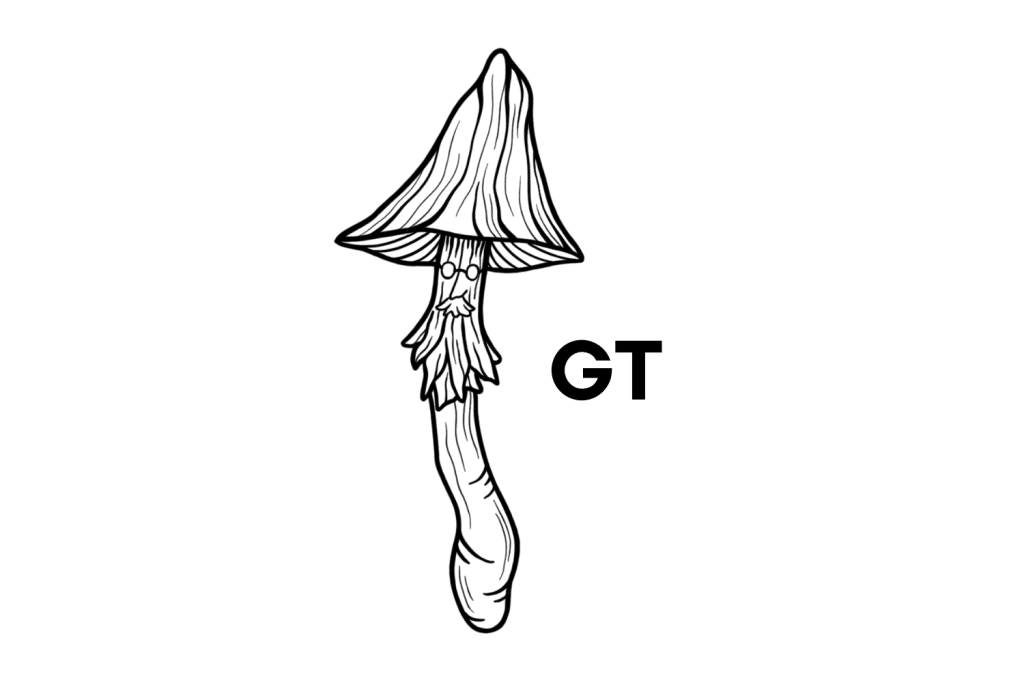
Golden Teachers
Finally, Golden Teachers is another classic strain and perhaps the most common today. Much like Blue Meanies, the name Golden Teachers was derived from a common name for a specific species of mushroom — this time the Psilocybe cubensis species itself.
Golden Teachers have a relatively high potency — although they’re less potent on average than Blue Meanies.

